Foreword
Since the 1960s, polyurethane adhesive has been rapidly developed due to its good adhesiveness and high elasticity. As a universal non-structural adhesive, it is widely used in the bonding of many materials. In recent years, China has become the world's largest shoe producing country, producing more than 4 billion pairs of leather shoes (including artificial leather shoes) annually. The cold-gluing process is the main process adopted by the large-scale footwear industry today. The adhesive used for the cold-adhesive shoes is based on different adhesive materials, mainly including a neoprene adhesive, and the polymethyl methacrylate is used according to the bonding material. Branch neoprene rubber adhesives, polyurethane adhesives, etc. The main requirements for adhesives for shoes are room temperature curing, strong adhesion and good flexibility. Polyurethane adhesives are increasingly used due to their excellent adhesive properties, adhesive process properties, toughness of the cured adhesive layers, low temperature curing properties, and light (even colorless) properties. Nowadays, in Europe and the United States, 80% to 90% of footwear adhesives are polyurethane type.
Room temperature curing polyurethane adhesives are two-component adhesives. In traditional two-component polyester adhesives, the prepolymer is polyester with a soft segment. Generally, polyester has a large viscosity, and the corresponding adhesive has poor flexibility; moreover, it is mostly blocked with diisocyanate. During the construction process, the isocyanate terminal group easily reacts with moisture in the air; in addition, low molecular amines used for curing at room temperature are used. Curing agents are also not accepted by shoe factories. Therefore, it is necessary to develop a polyurethane adhesive that has good adhesive properties, conforms to process requirements, and is easy to store in order to meet the needs of the footwear industry and other industries.
This article explores the use of polyethers as the basis for soft segmented hydroxyl terminated polyurethane prepolymers to formulate adhesives (avoiding isocyanate end groups reacting with moisture in the air). The resulting product has good flexibility and strong adhesion. , Less viscous, easy to apply. At the same time, the influence of the molecular weight of the polyether segment and the amount of the curing agent on the performance of the adhesive was investigated.
2 Test section
2.1 The main raw materials and instruments
Raw materials: tetrahydrofuran, acetic anhydride, perchloric acid, TDI, ethyl acetate (all of which are chemically pure), DesmodurRF.
Instrument: NDJ-79 rotary viscometer, XLL-100A tensile testing machine.
2.2 Test
2.2.1 Preparation of Polytetrahydrofuran
The amount of tetrahydrofuran is 1.6 mol, the amount of acetic anhydride is 0.5 mol, and the amount of perchloric acid is 0.01-0.05 mol. Reaction time 2.5h. The product acetyl polytetrahydrofuran was saponified with a 2-fold amount of a 0.5 M KOH ethanol-water solution, the ethanol was distilled off, and the aqueous layer was removed with a separatory funnel. The oil layer was washed with water until neutral, the water was distilled off under reduced pressure, and the residue was vacuum-dried to obtain colorless viscous polytetrahydrofuran. Ethyl acetate was used as a solvent, and the viscosity average molecular weight of polytetrahydrofuran was measured with an Ubbelohde viscometer.
2.2.2 Preparation of Hydroxyl-terminated Polyurethane Prepolymers— Chain Extension Reactions
In a dry three-neck flask having the above-described polytetrahydrofuran a stirrer, a thermometer, a condenser and a drying tube was added Ca Cl2 metered, TDI, and ethyl acetate, water bath, controlling the reaction temperature of 65 ~ 67 ℃, the reaction 3h, Hydroxyl terminated polyurethane prepolymer with a pale yellow viscous liquid appearance.
When the NCO/OH ratio is 0 85, polyurethane has a higher bonding strength. The ratio of the chain extension reaction raw materials is: according to NCO/OH=0.85, the amount of TDI and polytetrahydrofuran formulated according to the relative molecular weight of polytetrahydrofuran, polytetrahydrofuran (W)/ethyl acetate (W)=1.
2.2.3 Peel strength test
Weigh the appropriate amount of polyurethane prepolymer, add a certain amount of butanone to a 35% concentration of glue, and add 6% of Desmodur RF [containing 20% ​​phosphorothioate tris(4-isocyanatophenyl) ester], Germany Bayer Produce] as a hardener, and then coated on 150 × 25mm2 surface-treated PVC leather (or leather) specimen or vulcanized rubber specimen, each specimen topcoat twice, placed at about 60 °C for 5 ~ 15min, Hand touch no wire, close the sample, pressurize properly, place it at room temperature for 48 hours, use XLL-100A type tensile testing machine to stretch at room temperature to 100mm/min, test PVC leather-PVC leather and leather-vulcanized rubber stripping strength.
3 Results and Discussion
Molecular weight polytetrahydrofuran control 3.1
The relative molecular weight of the polymer has a great influence on the adhesive properties of the adhesive, because it affects the wettability and acting force of the adhesive on the bonded surface, and the relative molecular mass of the polymer must be controlled within a certain range.
The amount of perchloric acid has an influence on the relative molecular weight of polytetrahydrofuran. The relative molecular weight of polytetrahydrofuran decreased as the amount of perchloric acid increased. This is mainly due to the increase of the amount of perchloric acid, the increase of acetyl cations in the system, and the increase of the chain initiation point, which leads to a decrease in the relative molecular mass of the polymer.
3.2 The influence of the relative molecular mass of the polyether segment on the viscosity The relative molecular mass of the polyether segment directly influences the viscosity of the polyurethane prepolymer. The viscosity of the polyurethane prepolymer increases with the increase in the relative molecular mass of the polyether segment. This is because in the chain extension reaction, the relative molecular mass of the polyurethane prepolymer depends on the ratio of hydroxyl terminated polyether and TDI.
The relative molecular mass of the polyurethane prepolymer can be controlled by adjusting the ratio between the two. When the amount of TDI is constant, the relative molecular mass of the polyurethane prepolymer increases with the increase of the relative molecular mass of the polyether segment.
3.3 Effect of Relative Molecular Mass of Polyether Segments on Adhesion
Polyether segment as a flexible segment in the polyurethane molecule of this test, its relative molecular mass has a significant influence on the adhesive strength of polyurethane. When the relative molecular mass of the polyether segment is around 2,300, the polyurethane has the highest adhesion force, and the adhesive force is lower than the relative molecular mass range or lower. The decrease in the relative molecular mass of the hydroxyl-terminated prepolymer (determined by the relative molecular mass of the polyether segment) increases the hydroxyl value. When the amount of the curing agent is not sufficient, the crosslinking density decreases, and the chemical bond force and intermolecular force generated during the bonding process are decreased. And mechanical force and other small, low adhesion. When the relative molecular mass is too large, the flowability of the adhesive is poor, and the wettability to the adherent substance is poor, and since the distance of the hydroxyl group is long, the crosslink density is decreased, and the cohesive strength is low, so that the adhesive force is reduced.
3.4 Effect of Curing Agent on Adhesion
The amount of curing agent has a direct impact on the bonding strength of polyurethane. The polyurethane prepolymer with a relative molecular weight of 2300 in the polyether segment was tested. When the amount of the DesmodurRF curing agent was 6% (W/W) of the prepolymer, the polyurethane had the best adhesion. If the amount of curing agent is too small, the cross-linking density decreases and the adhesive strength decreases. Excessive amount of curing agent, the curing speed is too fast, is not conducive to coating adhesive, poor adhesion to the adhesive material, but also to reduce the adhesion.
4 Conclusion
Polyurethanes with a relative molecular weight of 2300 in the vicinity of the polytetrahydrofuran as a flexible segment synthesis of polyurethane, the corresponding adhesive to PVC leather - PVC leather and leather - vulcanized rubber have better adhesion. With DesmodurRF as a room temperature curing agent, the best results are achieved with 6% (W/W). The adhesive is suitable for cold sticky shoes and other uses.
Source: 21st Century Fine Chemicals Network
For Aluminum Carabiner Clip, the material is aluminum, shape can be customized.
The customized Aluminum Climbing Carabiner logo process can be frosted, flattened, laser LOGO, silk screen LOGO, etc.different prices of different processes.
The advantages of Aluminum Carabiner are light, anti-corrosion and anti-rust etc.
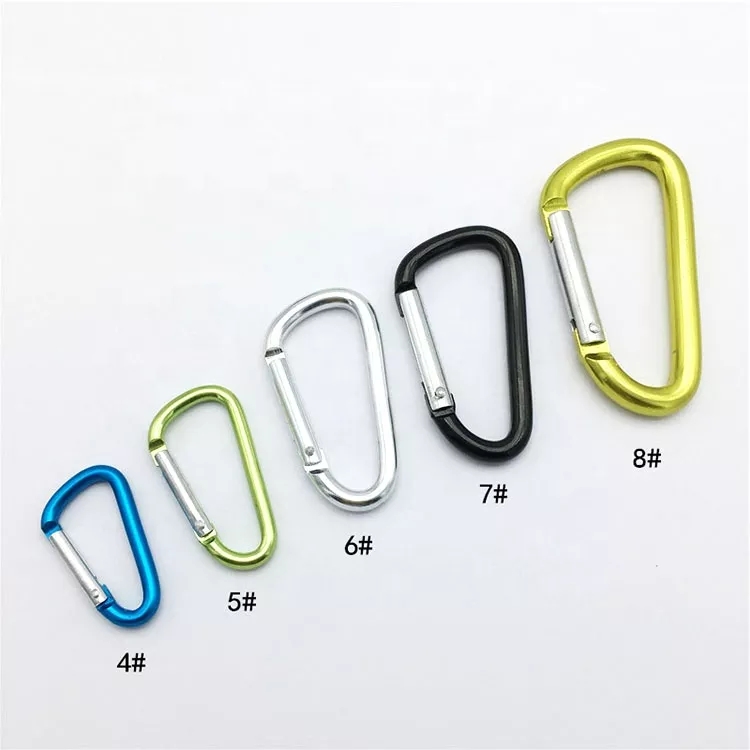
This is a relatively common Carabiner, with a variety of colors and sizes, the regular sizes are 4#, 5#, 6#, 7#, 8#, and other sizes can also be customized.
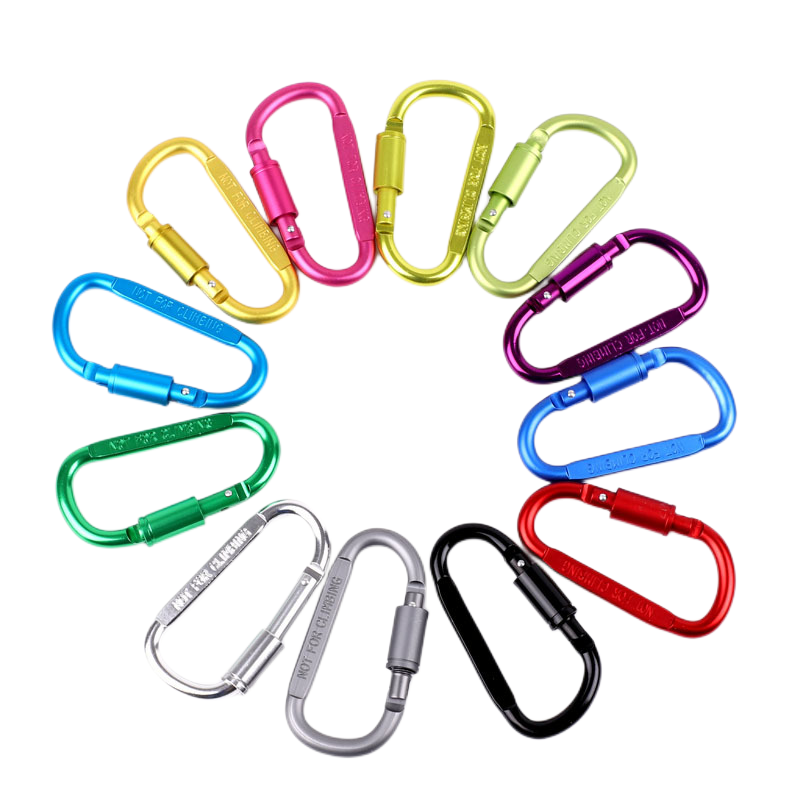
These are Locking Carabiners, which can lock the opening firmly and can engrave the logo on the flat.
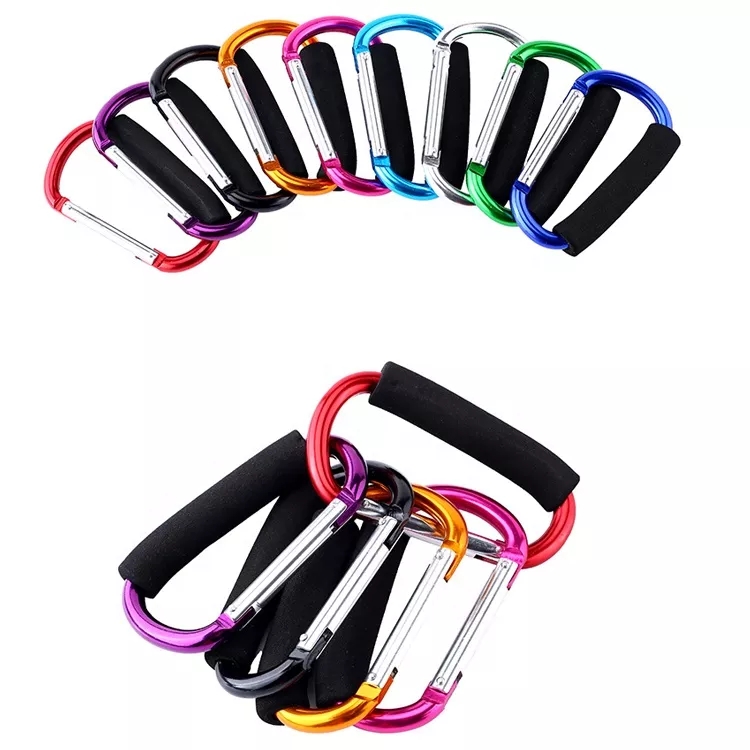
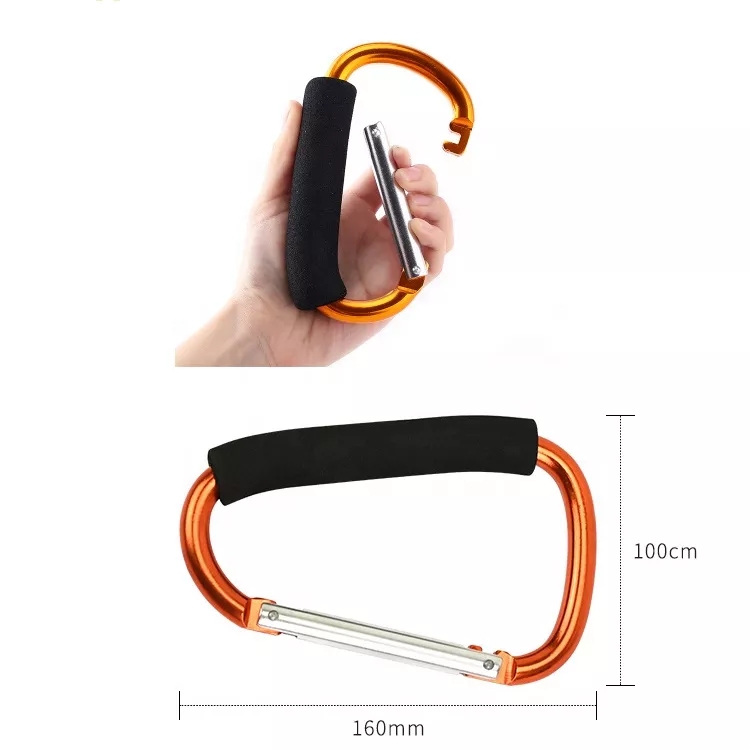
This Carabiner Climbing has a cushioned sponge to protect your hands. It is available in many colors and sizes. The picture is a Carabiners Large.
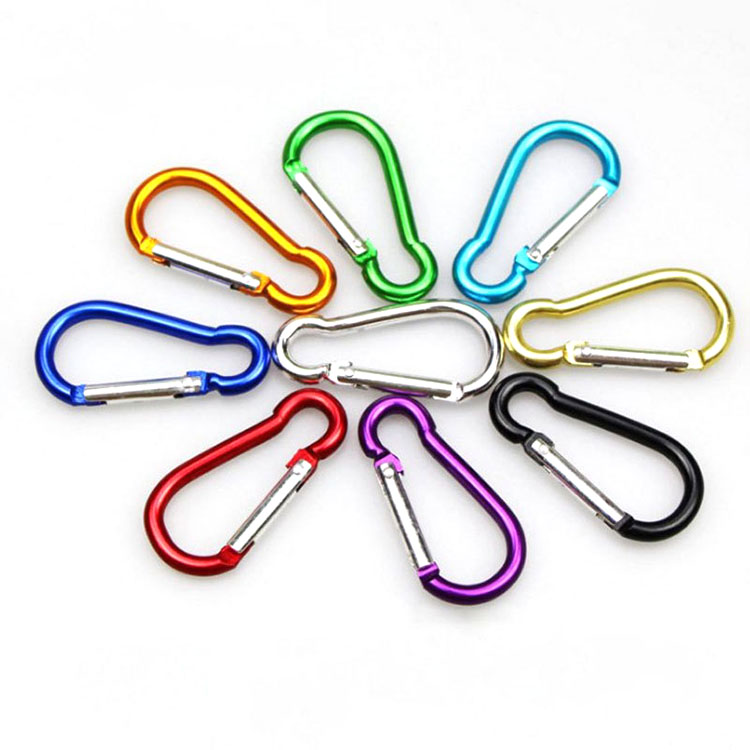

These two models are different from the previous D shape, these two are gourd-shaped Carabiner For Climbing, one is a round wire diameter, and the other is a flat wire diameter
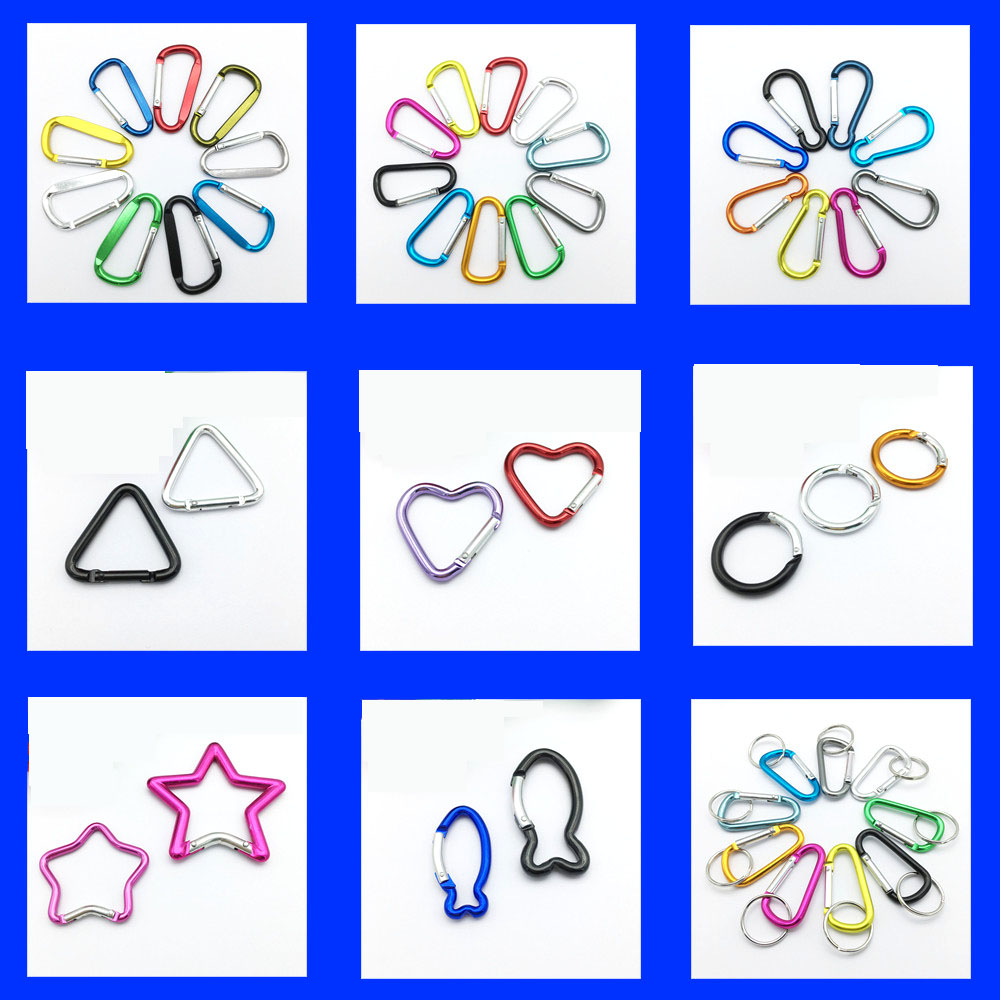 We also have other shaped Carabiners For Climbing in heart shape, star shape, fish shape etc.
We also have other shaped Carabiners For Climbing in heart shape, star shape, fish shape etc.

Climb Carabiner has a wide range of uses and is a popular trending hot item
Carabiner Climbing,Carabiner For Climbing,Climbing Carabiner,Carabiners For Climbing,Climbing Carabiners
Shenzhen Yiyixing Zipper Manufacture Co.,Ltd , https://www.nicekeychain.com